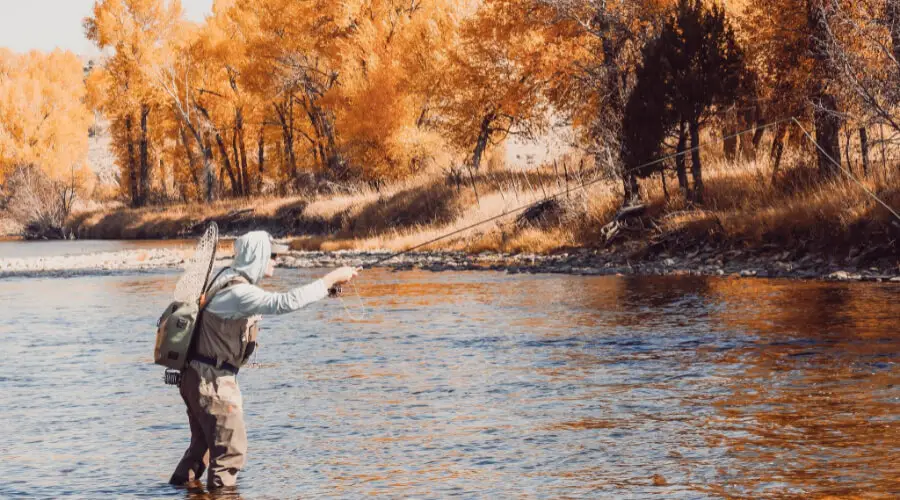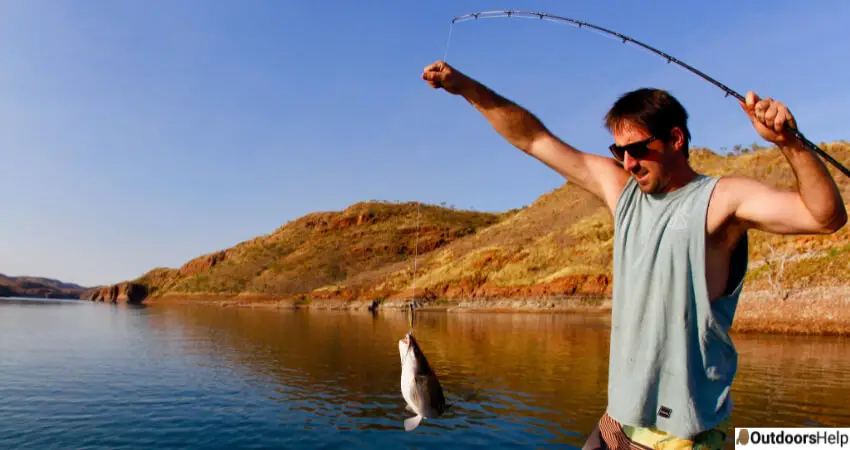How fish get into lakes is a very interesting topic that various scientists have researched far and wide. Looking at the fish population in some isolated islands and water bodies rules out the obvious answer that humans often deliberately introduce fish into lakes and ponds. Some isolated lakes may originally have been part of river systems that dried up the same way a land bridge may have connected some islands. For a lake to be created, a river may have been flooded long ago and briefly flowed into a low-lying land. Have you ever wondered how fish get into some remote water bodies? Stick around as we take you through some fine details of how fish get into various water bodies.
For the maintenance of biodiversity, understanding how fish are dispersed in remote water bodies is important. The basis for the preservation of shelters and targeted reintroduction is formed by knowing how species colonize new habitats and the spread of invasive species.
Fish are more limited in their transportation techniques, as their dispersal into new environments follows the same rules as with any other form of life. The fish eggs can survive out of the water for several hours, while most fish cannot travel very far over the land. They hitch a ride to a new home when water birds come to the lakes or ponds to feed and get stuck to their feathers.
What Are The Ways That Fish Get Into Lakes, Rivers, Or Ponds?

Fish have limited ability to travel over the land and from one water body to another as it is far less frequent in much of the world but not unheard of. Since being released outside the native territories, catfish have spread their territories and invaded several water systems. Of course, this method is only useful to species that can survive out of the water.
For them to end up in new rivers or ponds, there are primarily three main ways:
1. Through external help
2. They are already there
3. Getting there naturally
Let’s look at each in detail.
1. Through External Help:
Accidental or unintentional fish transfers have been discouraged because the nonnative fish often compete or prey upon the native species. But there is always a chance of transport from other sources while most fish migrate in on existing waterways.
| Method: | Description: |
| The aid of water birds | A pond that forms near other ponds may receive new fish from passing birds of prey dropping their catch. |
| Local animals | As they move from one lake or pond to another, fish roe that remains damp enough may get washed off to their fur and feet. |
| Human beings | You accidentally release fish or fish roe into the new water by carrying them in on the mucky bottoms of the boats and other tackle equipment between the water bodies. This provides the new water bodies with sports species that are valued, for example, trout and bass. Into the open water bodies, aquarium owners have also emptied species that are illegal. |
2. They Are There Already:
You might not see the fish in a fresh pond or lake until some time passes after their formation, even though they might already reside in the water bodies. Sounds unbelievable, right?
Hatching only when locally hydrated, there are some species of aquatic animals that lay eggs capable of surviving drought in long spells. Certain species also leave their eggs in the mud of a water body after digging deep. In the newly formed water bodies, they come out after the eggs hibernate, and the water body is refilled to reproduce and propagate their species. A good example of fish that can survive dry spell is the American alligators
3. Getting There Naturally:
Land could have the same drainage system, causing different water bodies to share the same water and inhabitants. Rivers and seas themselves form many lakes and ponds, and as a result, they contain the same water as many lakes and ponds that seem unconnected when the water level is normal and joined in many ways.
Let’s look at it this way; low-lying water might spill over the natural boundaries of a water body and accumulate in a low-lying area through small streams if there is a steady upsurge of water. Acting like a liquid highway between the main river and the newly formed lake leads to forming a new small water body, where fish and other aquatic creatures might travel through the same streams. The newly arrived fish then reproduce and populate the new lake or pond once there.
Sometimes, a short flooding period can also wash up some fish from other nearby bodies of water into a certain lake, pond, or river. A different rare occurrence is the ability of some species of fish to travel on land or mud, thus migrating from one water body to another. An example is a walking catfish with expansive territories and can invade other water systems by moving with the fins. The lungfish and other species can also move to other lakes or ponds by jumping their way across short distances.
When a dam is made through natural events, beavers, or men, the bond forms part of an existing water system. When the floodwaters are pulled back, new ponds are created from local flooding that causes lakes and rivers to overrun their shores and empty into low-lying land and new valleys. Complete with algae, bugs, and fish, the water body forms with water already part of an existing ecosystem.
Conclusion:
Sometimes fish can bring themselves to the water body when it is newly formed. At some point, the water may eventually spill over the top of the surrounding land and create a river, stream, or creek if the water body forms with a steady upsurge of water due to spring. It creates a fish highway if the creek connects with another water body; a lake or the ocean or another stream or river. Finally, finding their way to the new lake and populating it, fish will move into the new territory or migrate up the stream to spawn.
It is nonetheless as interesting that the truth is not as mystical as what we assume. The presence of fish and other aquatic creatures inside the water bodies can be attributed to low-lying nature’s maxims regardless of its apparent isolation from other water bodies, its newness, or the size of the river, lake, or pond. It is just science and logic to explain fish in new water bodies; there is not much mystery.
We hope that this article has answered most of your questions regarding the presence of fish in the lakes. Everything you needed to know has been explained in detail to enlighten you from the basis of scientific research. No matter how complex or surprising it may be, Mother Nature proves that life finds its way.

